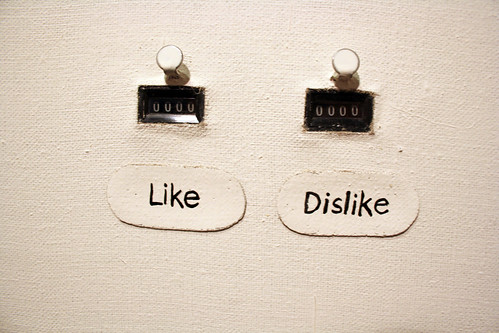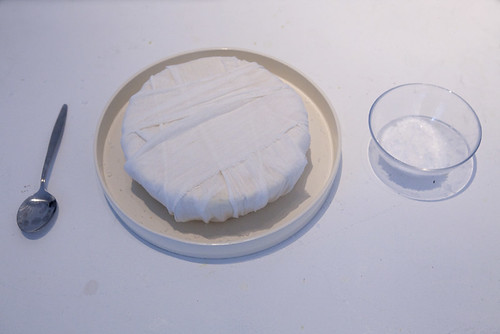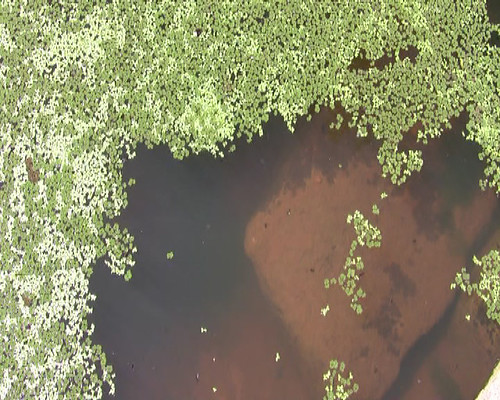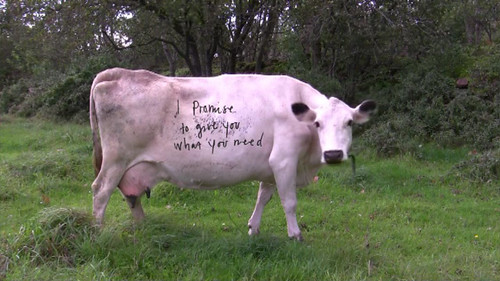
 An opinionresearch.
An opinionresearch.
This installation examines the popularity of statements from the manifest of the European Arts and Agriculture network, agri-culture.eu. This network was established in connection to Kultivators “Wedding between Art and Agriculture” in July 2010, and officially launched at he international conference “Campo Adentro”, in Madrid later the same year.
Places of research:
Supermarket artfair , Kulturhuset, Stockholm
Himmelsberga, Öland

Statements:
We shall consider feast functional and work-out decadent.
We shall make art like farmers and farm like artist.
We shall disregard national borders, and refuse advantages given to us by historical crime
We shall recognize traditional rural knowledge an open tool for radical change.
We shall upgrade our pets to become our co – workers.
We shall be producers and political beings before consumers and voters.
[AFG_gallery id=’29’]
![Inland art, agricultures&countryside]()

Presentation at The Campo Adentro International Conference
The conference lasted for five days (from October 20 to 24, closure day) during which there was an exchange of experiences and points of view with the aim of strengthening and cross-linking networks working on the relationship between culture, territory and society.
200 participants, 35 experts and speakers, and 5 institutions took part in the 5-day conference.
It provided a space for reflection and transmission of information: the status of the rural question, recent theoretical research on art and landscape and the practice of contemporary artistic interventions in relation to the rural… by incorporating different disciplines such as rural sociology, social psychology, eco-design, demography, agricultural policy theory, etc. We will also have the testimonies of people from the countryside, as valuable as any other well-established knowledge. The presentations will be expanded through round-table meetings to encourage public participation, as well as specific working groups. The target audience will be diverse but with a common interest in exploring this new area of thought and action: artists and art students, cultural agents, curators and art critics, professors of various disciplines, rural sociologists, rural development workers, politicians, etc.
The Campo Adentro International Conference was organized in collaboration with the Museo de Arte Reina Sofia, where it took place for the most part. At the same time, various activities took place in other venues at different cultural institutions around the city. You can find more detailed information in the program, downloadable in pdf.
To download the program in PDF, click here
To download the biographies of the speakers go to the Mediateca



Kultivator residency in Rum 46 Århus, Denmark
18th of October until 31st of October 2010
Most authorities consider that cheese was first made in the Middle East. The earliest type was a form of sour milk which came into being when it was discovered that domesticated animals could be milked. A legendary story has it that cheese was ‘discovered’ by an unknown Arab nomad. He is said to have filled a saddlebag with milk to sustain him on a journey across the desert by horse. After several hours riding he stopped to quench his thirst, only to find that the milk had separated into a pale watery liquid and solid white lumps. Because the saddlebag, which was made from the stomach of a young animal, contained a coagulating enzyme known as rennin, the milk had been effectively separated into curds and whey by the combination of the rennin, the hot sun and the galloping motions of the horse. The nomad, unconcerned with technical details, found the whey drinkable and the curds edible.
Widcome, Richard. The Cheese Book. Seacaucus: Chartwell Books, 1978.
Making a Crosscultural Nomadic Cheese with Swedish/Danish culture, ripening into the meeting with our friends from the middle east.
Plan:
Kultivator will travel to Århus with milk from the farm.
15 – 18 October 2010
The milk comes from Kultivators farm and straight from the cows with no pasteurizing, which means that the culture of the farms surrounding is still in this milk. This bacteria micro culture and the conditions of the travel (heat from car engine, time (estimated 7 hours) and shaking from driving) will start the transformation of the milk into cheese. In the gallery Rum 46 in Denmark the cheese mass will be infused with danish culture, creating the Crosscultural Nomadic Cheese.
Kultivator arrives 15 of October, and will work on salting, pressing and shaping the CNC in the galleryspace until the 18:th of October. A workshop/Drawing session will be held in connection with this. The CNC will ripe in the gallery until end October, and then be be tasted. Parts of it would then be preserved until next year June, when Camp project starts, and possibly parts of this cheese could infuse milk brought from the middle east.
Workshop: Visualize your nomadic life (appr. 2 hours, Saturday or Sunday)
Drawing session with public. Drawings will be left exhibited in gallery during the ripening period of the Crosscultural Nomadic Cheese.
Suggestion for duration of exhibition is two – three weeks, after which the cheese should be ready for consuming. After this an event could be for public to taste the Crosscultural Nomadic Cheese in the end of October/begin November?
A building on further connecting over to the Camp in 2011, would be the traveling of milk from the middle east, via the gallery in Århus to the farm of Kultivator?
[AFG_gallery id=’26’]

 info
info
film (see it big)
The International Gallery18 September – 2 October
Liverpool Biennial 2010
Curated by James Brady and Janette Porter (http://www.hightideuk.org/)
Ditch it
Environmental activism by play, art, and small and large animals, coordinated by Swedish art and agriculture initiative Kultivator.
Kultivator is located on a flat limestone island that lacks natural rivers. Instead, there are man made ditches, that already since century’s are leading water away from the island to the sea, to create more ground for cultivation and pastures. This has resulted in more land for people to feed on, but is also causing serious problems in the Baltic sea. The ditches carry the water quickly out, bringing with it nutrients leaking out from fertilized fields. This overfeeding of the sea results in an overproduction of algae, and dying seabeds due to lack of oxygen.
Already since years, commercial fishing outside the coast of the island has ceased, and the beaches clog of rotting or poisonous algae, making it hard to play in the shallow water. In the inland the plants and animals living in small freshwater pools and swamps has less and less space to live and breed. The process is a matter of both time and space. If the fresh water is contained and stays on the island longer, microorganisms and larger animals and plants can process the nutrients in the water. If a little bit of land/space is given back to the wetlands, more can eventually be used in the sea. This is a well known fact, but due to slow bureaucratic procedures and land owner issues little happens on a large scale. Time and nutrients passes…
In May 2010, Kultivator dug a pool next to one of these ditches. The water from the ditch was led into the pool and kept there. Water, plants and animals from natural pools was added to it, and a solar powered pump installed to give oxygen. In a small pool like this, it is beneficial if the water is sometimes stirred, what ducks and larger animals normally would do. Unfortunately, no wild ducks introduced themselves, so the village kids, with their remote control boat, some plastic toys and their dog would do that work during the summer. Meanwhile, under the surface, more and more microorganisms established themselves. Dragon flies appeared over the pool. Five freshwater mussels was put in, and to make it possible for them to reproduce, three goldfish were introduced. After a few weeks, shoals of small fish appeared. Probably the offspring of the goldfish. As a result of a project from a visiting artist the Asian water ferm Azolla was added, that can double its biomass in two days, under ideal conditions. It did. The Azolla was harvested to be used as green fertilizer on the raised beds of Kultivator, and fed to chickens and pigs. The pool is now containing salamanders, goldfish, frogs, bugs, worms, barbie dolls, some sunken ship and mussels and all these other little things we don’t know the name of. It also contained and processed nutrients that all this lived from during the five months it existed. The sea never even knew.
. The International Gallery18 September – 2 October Liverpool Biennial 2010 Curated by James Brady and Janette Porter (http://www.hightideuk.org/) Ditch it Environmental activism by play, art, and small and large animals, coordinated by Swedish art and agriculture initiative Kultivator. Kultivator is located on a flat limestone island that lacks natural rivers. Instead, there are man made ditches, that already since century's are leading water away from the island to the sea, to create more ground for cultivation and pastures. This has resulted in more land for people to feed on, but is also causing serious problems in the Baltic sea. The ditches carry the water quickly out, bringing with it nutrients leaking out from fertilized fields. This overfeeding of the sea results in an overproduction of algae, and dying seabeds due to lack of oxygen. Already since years, commercial fishing outside the coast of the island has ceased, and the beaches clog of rotting or poisonous algae, making it hard to play in the shallow water. In the inland the plants and animals living in small freshwater pools and swamps has less and less space to live and breed. The process is a matter of both time and space. If the fresh water is contained and stays on the island longer, microorganisms and larger animals and plants can process the nutrients in the water. If a little bit of land/space is given back to the wetlands, more can eventually be used in the sea. This is a well known fact, but due to slow bureaucratic procedures and land owner issues little happens on a large scale. Time and nutrients passes… In May 2010, Kultivator dug a pool next to one of these ditches. The water from the ditch was led into the pool and kept there. Water, plants and animals from natural pools was added to it, and a solar powered pump installed to give oxygen. In a small pool like this, it is beneficial if the water is sometimes stirred, what ducks and larger animals normally would do. Unfortunately, no wild ducks introduced themselves, so the village kids, with their remote control boat, some plastic toys and their dog would do that work during the summer. Meanwhile, under the surface, more and more microorganisms established themselves. Dragon flies appeared over the pool. Five freshwater mussels was put in, and to make it possible for them to reproduce, three goldfish were introduced. After a few weeks, shoals of small fish appeared. Probably the offspring of the goldfish. As a result of a project from a visiting artist the Asian water ferm Azolla was added, that can double its biomass in two days, under ideal conditions. It did. The Azolla was harvested to be used as green fertilizer on the raised beds of Kultivator, and fed to chickens and pigs. The pool is now containing salamanders, goldfish, frogs, bugs, worms, barbie dolls, some sunken ship and mussels and all these other little things we don't know the name of. It also contained and processed nutrients that all this lived from during the five months it existed. The sea never even knew.

 An opinionresearch.
An opinionresearch.





